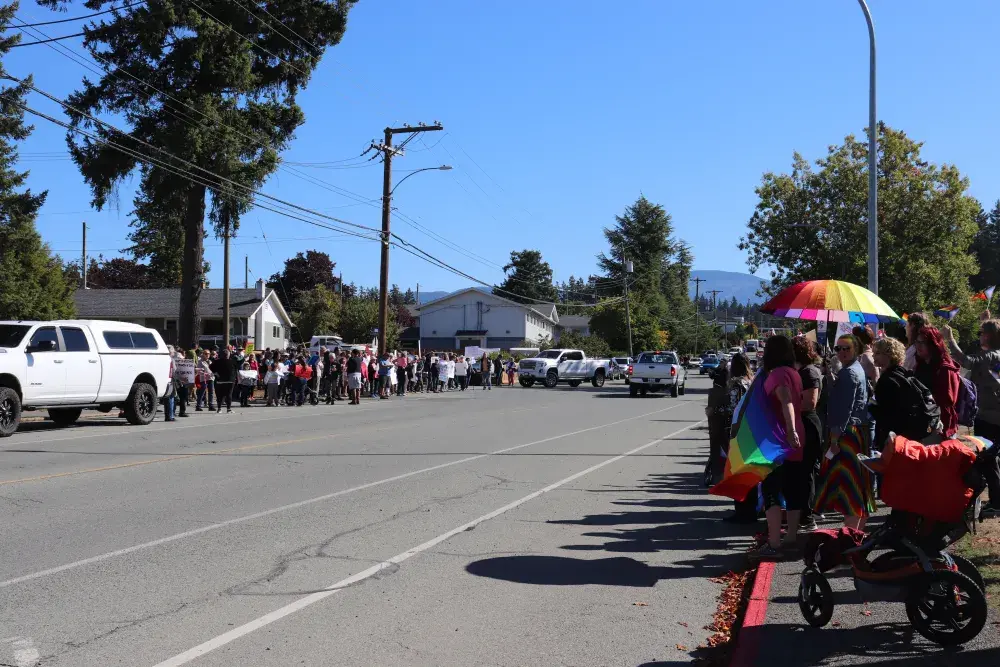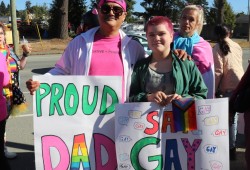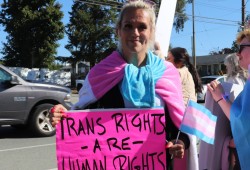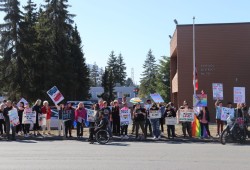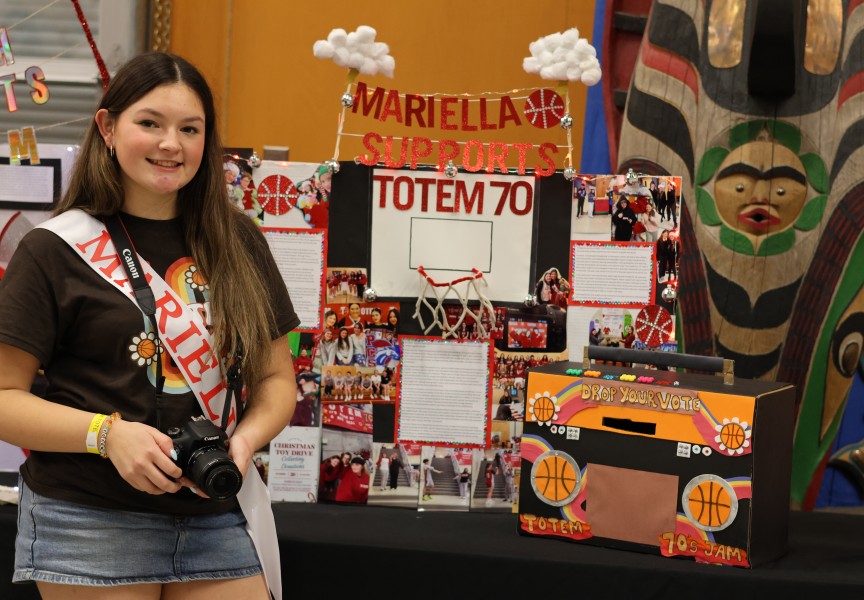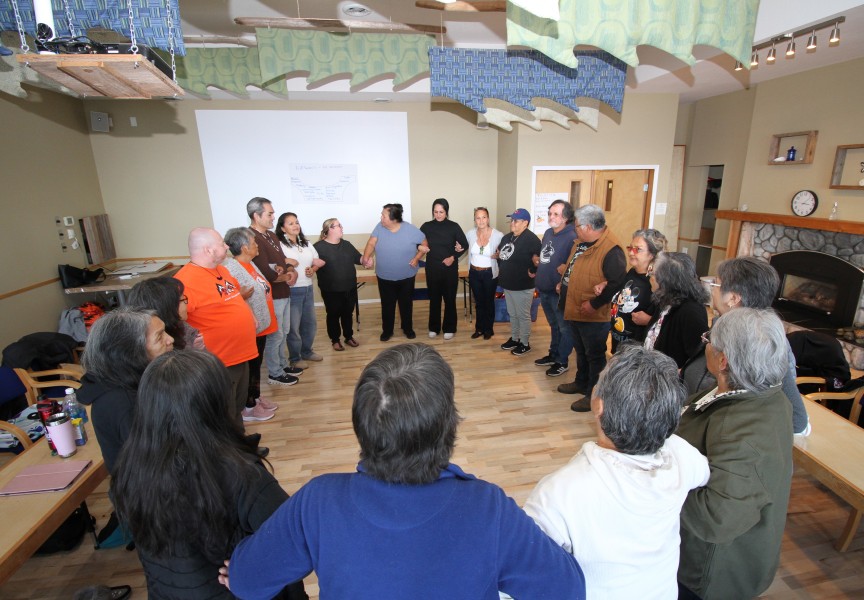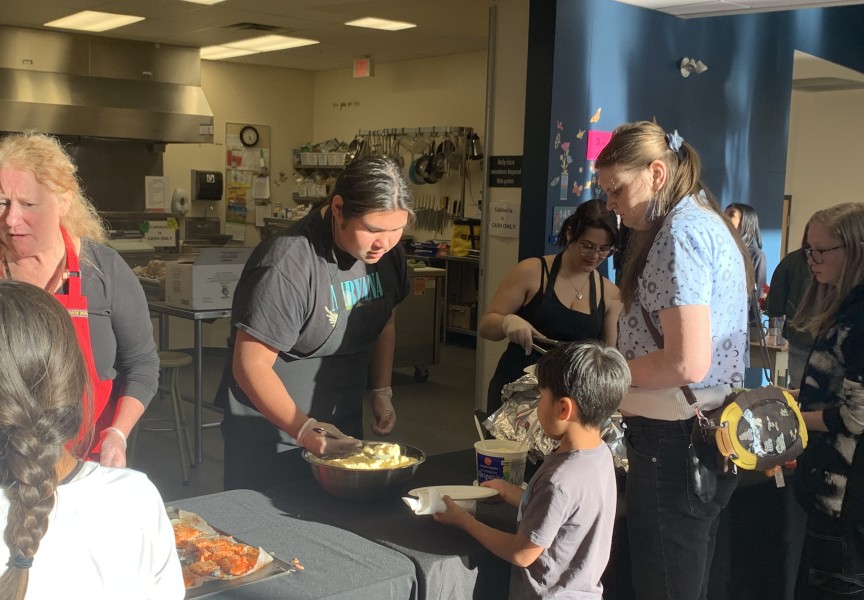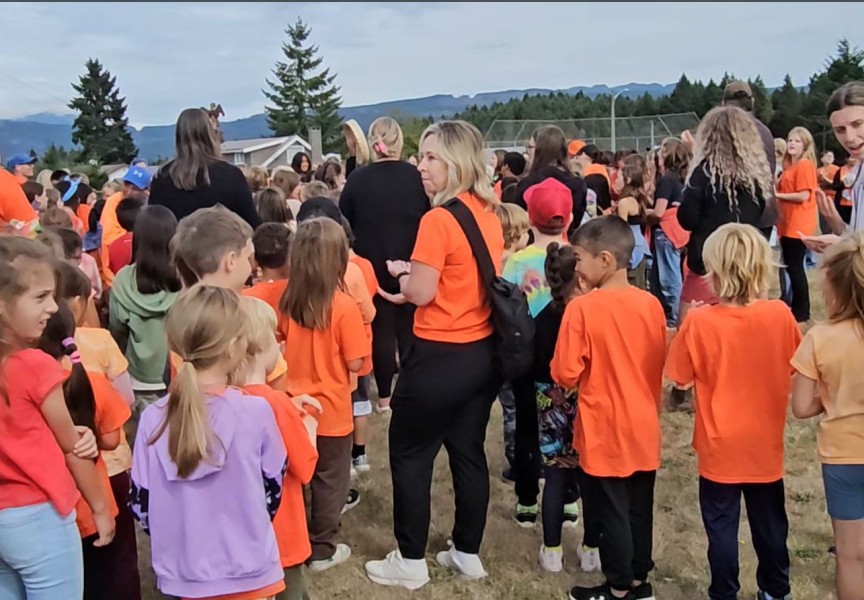Schools across British Columbia have been making changes with the addition of Sexual Orientation and Gender Identity (SOGI) education. Although many students and families have welcomed SOGI as a needed change in the school system, others have expressed concerns about what is being taught to their children.
On Sept. 20, rallies against and for SOGI were held across Canada, where the highly contested conversation surrounding the implementation of the education program amounted to arrests in cities, including Victoria and Vancouver. Victoria police even announced that the legislature had become unsafe when the rallies were being held, asking people to avoid the area.
In Port Alberni, the division was evident when Roger Street was split in two with LGBTQ2S+ advocates taking up the sidewalk in front of School District 70’s office and anti-SOGI attendees filling the sidewalk directly across the street.
SOGI was introduced into British Columbia six years ago after amendments were made to the Canadian Human Rights Act to include gender identity and expression, shared Scout Gray, who uses the pronouns they/them and is the national program manager of SOGI 123.
“In school districts across British Columbia, all schools are required to have codes of conduct and anti-bullying policies that address the protected grounds of discrimination under the B.C. Human Rights Code,” said Tim Davie, superintendent of SD 70. “This includes sexual orientation, gender identity, and gender expression.”
“In School District 70, we're committed to creating safe and inclusive environments for all individuals and this commitment is reflected in our policy and our everyday practice,” added Davie.
To date all of B.C.’s 60 school districts are formally participating. Gray explained that the needs of each community and the implementation of SOGI 123 will differ from school to school.
Overall, SOGI education is “an initiative that helps educators make schools safer and more inclusive for students of all sexual orientations and gender identities,” said Gray.
“Unfortunately, we know that schools have not always been a safe space for all students, especially 2SLGBTQ students,” Gray continued. “While that has changed a lot in recent years, there's still work to be done and a lot of educators who need support and guidance on how to do that. That's where we come in.”
For Stacie Johnston, she expressed that she has no hate in her heart for anybody. Through stories she heard and research she did, Johnston noted concerns she has with SOGI-inclusive education, such as what is being taught to young children, confidentiality, and gender-neutral washrooms.
“It seems like things are starting too early for young children to be talking about sexual identities [and] pronouns,” said Johnston.
Johnston noted that as children are being introduced to pronouns some have been getting bullied to choose a pronoun, which she feels is not inclusion.
“I also know some young women that were going into the bathrooms up at the high school, they’re gender neutral, and then boys were coming in, [and] they don't feel comfortable,” added Johnston.
Another friend shared a story with Johnston of her grandson who was in the washroom when a group of girls came in laughing. When his parents went to the school they were told that the boy was not being inclusive.
For Honey Johnson of Huu-ay-aht, it’s heartwarming to see the support for LGBTQ2S+ youth in schools now.
“As a trans individual growing up in this school here, it wasn't easy,” said Honey, who had previously been a student at ADSS. “I didn’t have a lot of support.”
When it came to bathrooms, they were one of Honey’s biggest struggles as a student.
“It came down to a point where I couldn’t even use public bathrooms at school,” said Honey. “So seeing that has changed where they do have bathrooms that are for any gender. It’s amazing.”
Gray explained that the types of gender-neutral bathrooms that are going into schools now have a universal design. While the entrance to the bathrooms are open, each individual stall has an enclosed room with a door.
“A girl’s bathroom or a boy’s bathroom have typically been places where a lot of bullying happens [and] a lot of getting into trouble happens like smoking and vaping,” said Gray, “because it's very difficult to supervise these environments.”
“They are better for all sorts of kids for all sorts of reasons,” Gray added.
When asked for examples of what SOGI-inclusive education looks like for younger children in elementary, an example Gray used was including broader language when addressing families.
“One example is just encouraging and reminding teachers to not always say ‘your mom and dad’ when they're talking to kids about their parents with their family, because that can exclude kids who only have a mom or only have a dad, as well as kids who have different family structures - like two moms or two dads at home or who live with aunties, uncles and grandparents and foster families,” said Gray.
Another example that Gray provided was introducing a picture book about colors.
“Looking at a picture book that talks about colors and how all kids can enjoy all colors,” said Gray. “It's not just pink is for girls, and blue is for boys, and that’s the end.”
Older classes may discuss topics such as human rights legislation that could include the history of discrimination against LGBTQ2S+, said Gray.
“Teachers use age-appropriate and developmentally-appropriate lessons for their students in each grade,” said Davie. “[SOGI] is not a course, it’s a resource, and it’s embedded throughout the curriculum.”
Both Davie and Gray expressed the importance of the parents' involvement in their child's education. Parents are encouraged to reach out to teachers and principals when seeking clarity on SOGI.
“There is so much misinformation circulating right now about what SOGI inclusive education is,” said Gray. “I really empathize with parents who are hearing some of this and… some of it sounds scary.”
“SOGI 123, is not an additional requirement of the curriculum or specific class, but it's just tools and resources and to help create safe and inclusive school environments,” added Gray.

